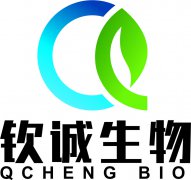细胞因子重组蛋白

Recombinant Human TLR-4
Recombinant Human TLR-4
产品详情
Characterized by N-terminal domains rich in leucine repeats and C-terminal intracellular Toll/interleukin (IL)-1 (TIL) domains, the structurally-related members of the Toll-like Receptor (TLR) family are abundantly expressed, transmembrane signaling receptors that play integral roles in the induction of innate and adaptive immunity. As members of the larger family of pattern recognition receptors, TLRs recognize and respond to pathogen-associated molecular patterns (PAMPs) and endogenous damage-associated molecular patterns (DAMPs) by initiating activation of NF-κB and the release of inflammatory mediators. Constitutively expressed in cells of the immune system, TLR-4 is secreted at significantly amplified levels in response to high concentrations of LPS, the major cell wall component of gram-negative bacteria that acts as the key ligand for TLR-4 inflammatory response. TLR-4 mounts a defense against infection through an intricate process involving interaction with co-stimulatory molecules, such as myeloid differentiation factor 88 (MyD88), NF-κB, LPS-Binding Protein (LBP), CD14, and MD-2, and the instigation of intracellular signaling cascade that prompts the NF-κB, Wnt/β-catenin, and mitogen-activated protein kinase (MAPK) pathways to secrete proinflammatory cytokines and chemokines. Myeloid differentiation protein-2 (MD-2), also referred to as LY96, is essential to TLR-4-mediated response to LPS due to its binding of both the extracellular domain of TLR-4, which serves to localize TLR-4 on the cell surface, and LPS to form the TLR-4/MD-2/LPS complex, which can be used for the in vitro removal of endotoxin from biological samples. The activation of TLR-4/MD-2 begins with the detection of LPS by circulating LBP, which in turn facilitates an association between LPS and CD14 for the formation of a CD14-LPS complex that transports and presents LPS to the TLR-4/MD-2 signaling complex, and culminates in the activation of downstream signaling events. Inflammatory response can also be triggered by the formation of a heterodimeric complex between TLR-6 and TLR-4, the internalization of which results in NF-κB-dependent secretion of CXCL1, as well as the production of proinflammatory cytokines, such as IL-1β, and the production of inflammatory regulating chemokines, such as CXCL2, CCL5 and CCL9. Considering TLR-4’s connections to immunity, inflammatory response, proliferation, apoptosis and angiogenesis, it is no surprise that irregular expression of TLR-4 has been linked to various malignant cell types, a number of autoimmune conditions genetically linked to psoriasis, and a number of other diseases. Recombinant Human TLR-4 is a 69.3 kDa glycoprotein containing 609 amino acid residues of the TLR-4 extracellular domain. As a result of glycosylation, Recombinant Human TLR-4 migrates with an apparent molecular mass of approximately 90-100 kDa by SDS-PAGE gel, under reducing and non-reducing conditions.
Source: HEK293 cells
Synonyms: Toll-like receptor 4, TOLL, CD284, ARMD10
AA Sequence: ESWEPCVEVV PNITYQCMEL NFYKIPDNLP FSTKNLDLSF NPLRHLGSYS FFSFPELQVL DLSRCEIQTI EDGAYQSLSH LSTLILTGNP IQSLALGAFS GLSSLQKLVA VETNLASLEN FPIGHLKTLK ELNVAHNLIQ SFKLPEYFSN LTNLEHLDLS SNKIQSIYCT DLRVLHQMPL LNLSLDLSLN PMNFIQPGAF KEIRLHKLTL RNNFDSLNVM KTCIQGLAGL EVHRLVLGEF RNEGNLEKFD KSALEGLCNL TIEEFRLAYL DYYLDDIIDL FNCLTNVSSF SLVSVTIERV KDFSYNFGWQ HLELVNCKFG QFPTLKLKSL KRLTFTSNKG GNAFSEVDLP SLEFLDLSRN GLSFKGCCSQ SDFGTTSLKY LDLSFNGVIT MSSNFLGLEQ LEHLDFQHSN LKQMSEFSVF LSLRNLIYLD ISHTHTRVAF NGIFNGLSSL EVLKMAGNSF QENFLPDIFT ELRNLTFLDL SQCQLEQLSP TAFNSLSSLQ VLNMSHNNFF SLDTFPYKCL NSLQVLDYSL NHIMTSKKQE LQHFPSSLAF LNLTQNDFAC TCEHQSFLQW IKDQRQLLVE VERMECATPS DKQGMPVLSL NITCQMNKT
Purity: ≥ 95% by SDS-PAGE gel and HPLC analyses.
Biological Activity: Determined by its ability to bind rhMD-2 in a functional ELISA

